As the Hong Kong government has been gradually giving ground as the mobilization continued, protests have not weakened. Despite Carrie Lam, the Chief Executive vowing that the Extradition Bill was “dead”, it appears that legally, it can be brought back before the Legislative Council (LegCo) in a matter of days. Hence, the moving on to the weekend protests in Hong Kong.
Every week a new theme
One week ago, the goal was to reach out to mainlanders to explain why Hong Kong is fighting for its rights. It was thus that the protesters chose to march towards the high-speed railway station, mainly oriented to allow mainlanders an easier access to Hong Kong.

While not as large as the previous protests, the protest still brought together several tens of thousands of protesters (maybe not the 265,000 claimed by organizers).
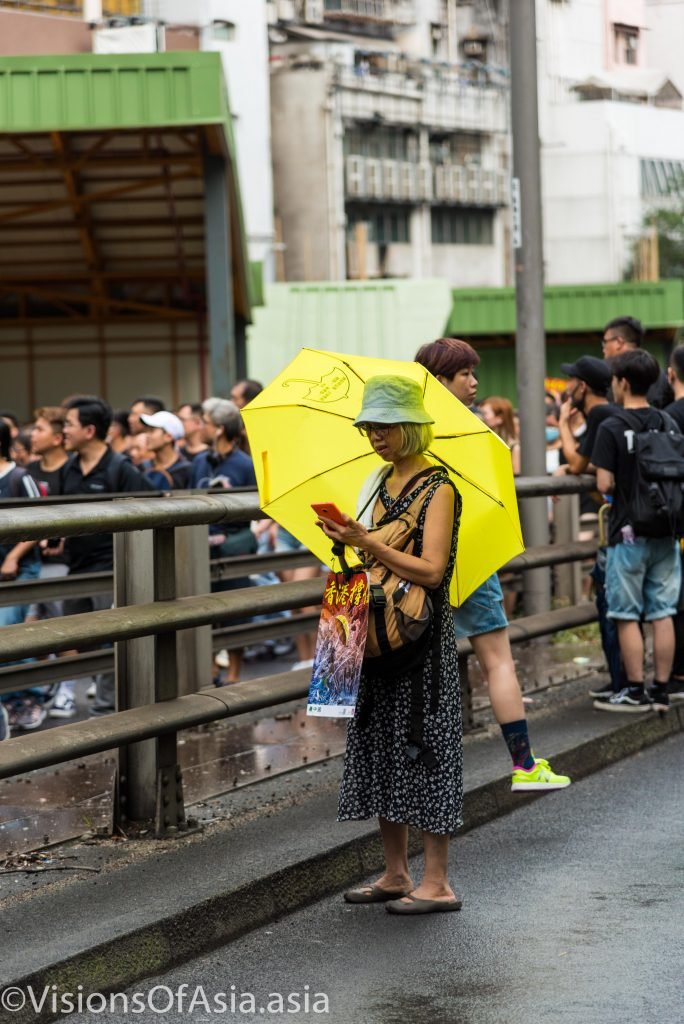
This protest, according to a model now repetitive, ended with protesters making a march until Mongkok, then some scuffles with the police who cleared the protesters quite violently.
Parallel trading: often denounced by Hongkongese
The protest on 13 July was mainly targeted to “parallel traders”, i.e. those who come to Hong Kong, buy various commodities and resell them on the other side of the broder.
For locals, this causes an increase in the price of goods. I must say that I am half convinced by the explanation. Seeing the prices in Sheung Shui, they were clearly lower than those in a more central location of Hong Kong.
Anyway, on Saturday, 13 July, it was the reason invoked for protesters to take to the street.
Low attendance at the beginning
As I arrived at the meeting place, namely Sheung Sui’s stadium, the attendance could not be said to be extraordinary. Just a few hundreds of people showed up.
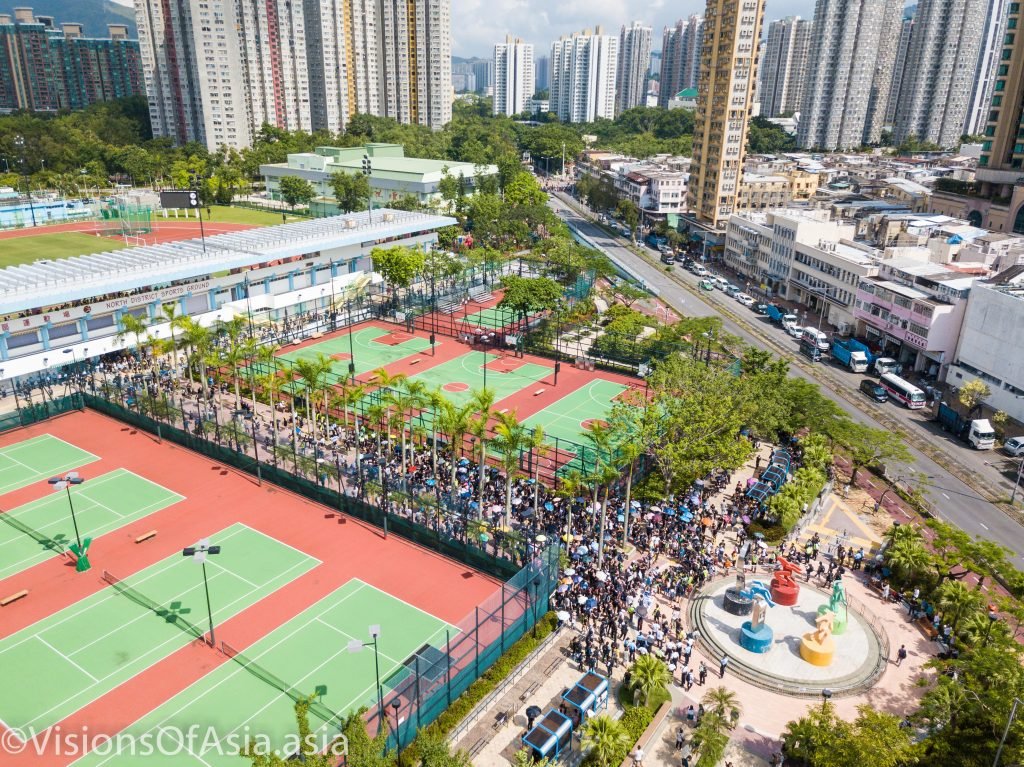
As the protest got underway, hundreds of people joined the march. However, despite the additional members, the protest did not exceed 2000 to 3000 people (although the police itself puts the number at 4,500 and organizers at… 30,000).
The match
The protesters were already quite angry at the police, the slogan “black police” coming back often. It did not help when an incident started. According to some protesters, a guy threw rubbish on the protesters from an overpass, causing them to move up to the pass, where they were encountered by the police. A tense standoff ensued.

Eventually, the police evacuated the overpass, but the confrontation moved down to the roads around the MTR station.
Journalists seemed to be at the frontlines, to the point the only thing differentiating them from protesters were the cameras they were carrying…
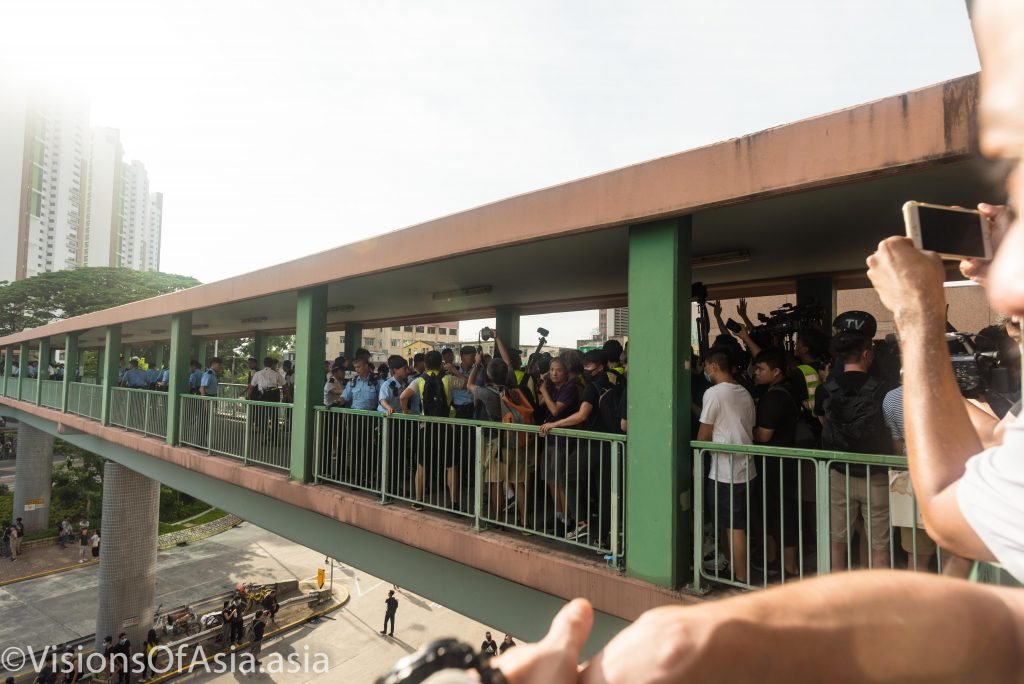
On the street below, protesters were calling each other, in a rather disorganized manner, which made their goals and process seem rather undecided.
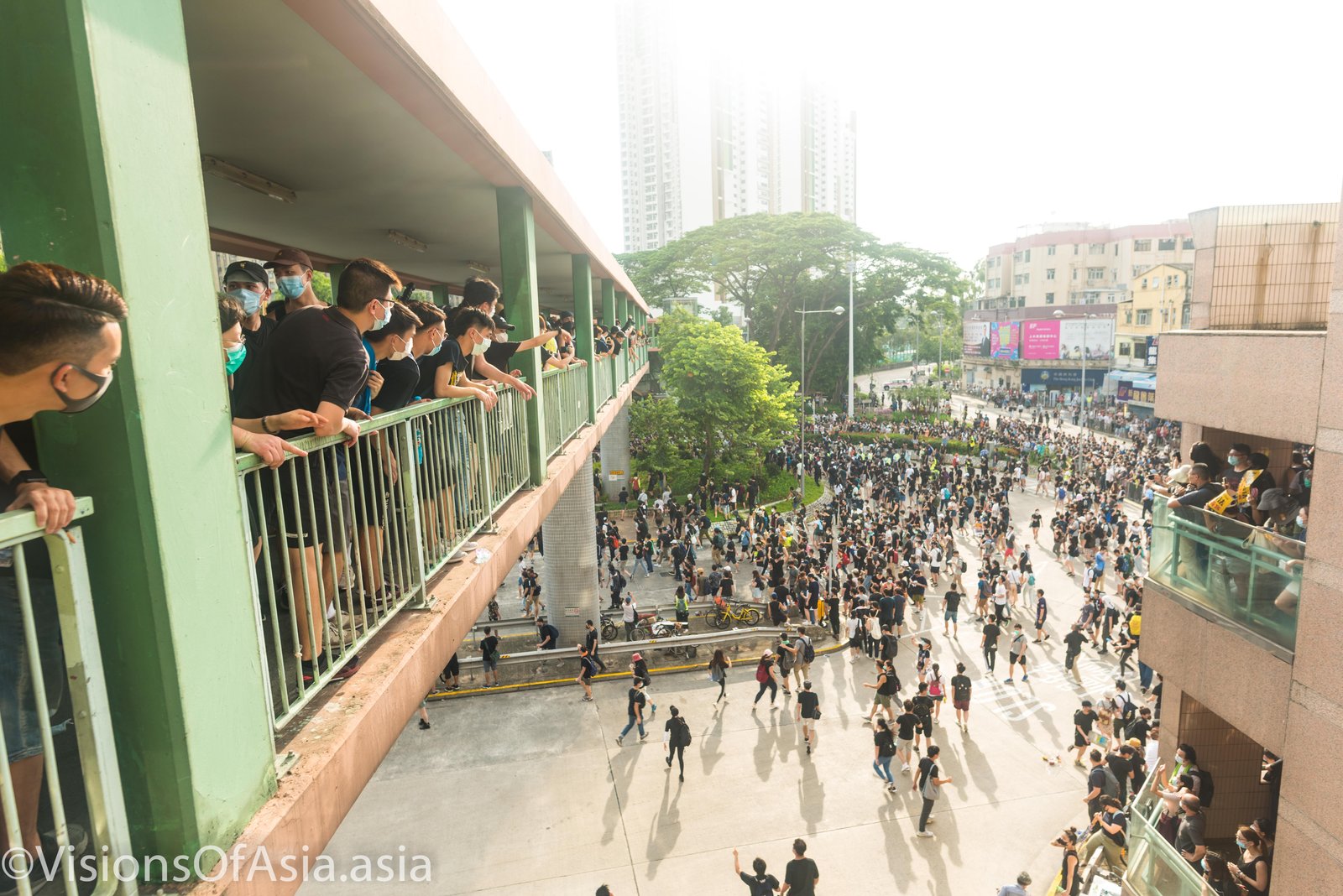
Colonial and UK flags
Notwithstanding some comments from leftists, the protesters seem to have perfectly assumed that their identity passes through accepting the colonial identity, and making it an integral part of their identity. The young man holding this flag said that it symbolized a rejection of the last twenty years of Beijing rule.
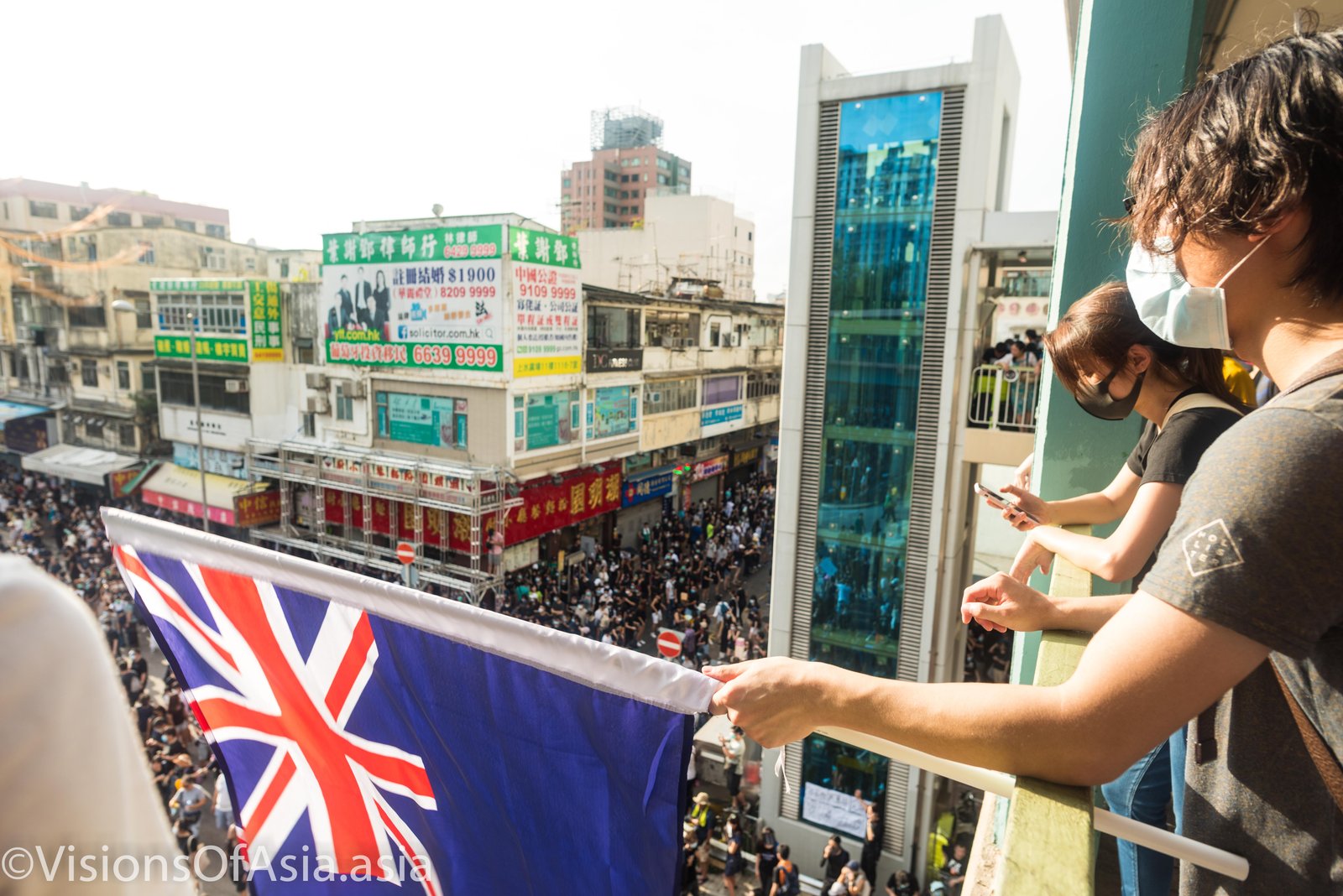
As clashes continued, after a police charge an older man holding a colonial flag was the first to lead protesters ahead.

Similarly, a lady with a British flag could be seen at the frontlines.

Injuries at the frontlines
Several protesters were injured while heckling the police and pushing back their frontlines.

One of the most spectacular injuries was probably a young man who, apparently was set upon by eight policemen.

Police pull back after the protester is injured. 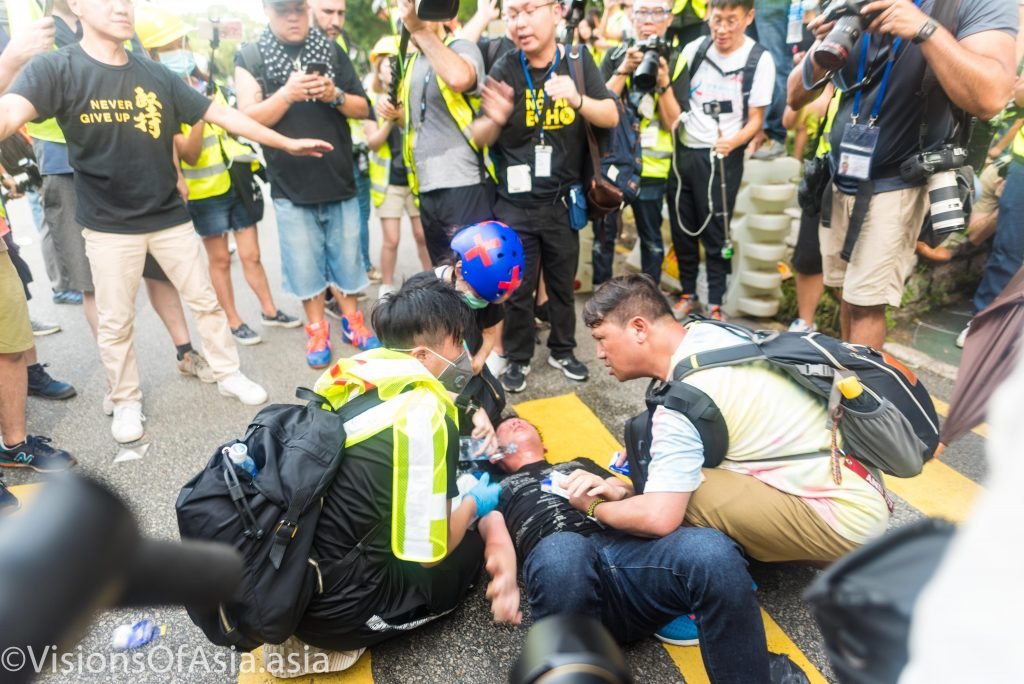
An injured protester is treated after being beaten up by the police.
After this injury, the police pulled back, leaving the protesters in command of a large avenue, but without anywhere near the numbers to hold this area.

In the end, the police finally came in at night and cleared the blockade. Since most protesters depend on MTR to get home, these protests seldom extend beyond midnight, and the police seem to know that too.
What these scuffles achieved? Nothing much, short of further antagonizing police and protesters. The government also seemed to have taken seriously the phenomenon of parallel trading, just as they did finally take action on the “dancing aunties” in Tuen Mun.
It is quite interesting that now, protests and violence have become the main mean of conveying a message to the Hong Kong government and China. We have been really close to fatal incidents on several occasions during these weekend protests. It is lucky nothing worse happened, but a death would really inflame passions again.
